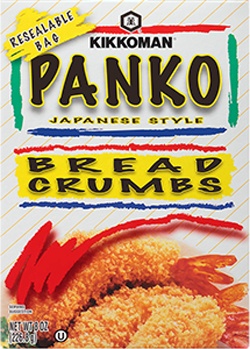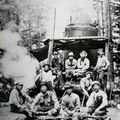My wife and I have noticed over several years now that certain terms in Japanese have English words accompanying them with the same meaning. Thereby creating a strange redundancy. Most of these “atrocities” were created by hakujin but Nikkei have carried on ignorant of the implications. Below is a list of some of the repetitious terms with some editorial comments. They may be amusing to some, horrifying to others. You be the judge.
Azuki red beans: azuki are red beans, hence the redundancy.
Cha tea: cha is tea.
Chikuwa fishcake: one of my favourites for a snack, but no need to repeat the term in English, because who else eats this treat?
Engawa veranda: an architectural feature of a Japanese house; roughly equivalent to a veranda (but not really to my mind).
Geta sandals: geta are sandals, awkward but sandals, nevertheless.
Gyoza dumplings: some even call it “Japanese gyoza dumpling”. Redundant overkill.
Hotate scallops: I may give this a pass since most hakujin don’t know the Japanese word for scallop.
Kabocha squash: a favourite on the Food Channel; first heard it back in the 90s.
Kakigori shaved ice: I suppose kakigori has a variety of syrup added; still, everyone knows what kakigori is. In Hawaii, the term is Shave Ice only (drop the “d”); unless you’re on the Big Island; then it’s Ice Shave.
Kakimochi rice crackers: I don’t consider kakimochi, sembei, arare or any other type of crunchy snack a “rice cracker”. Maybe it’s just me.
Kamaboko fishcake: the same as chikuwa above.
Kombucha tea: very popular at Starbucks but kombucha would do just fine.
Matcha green tea: a favourite at Starbucks. I chuckle every time I hear it.
Nappa cabbage: Another Food Channel favourite. Don’t know how many TV chefs use this term, but they are legion.
Nori Japanese seaweed: the word “Japanese” always gets me. Nori is Japanese for seaweed.
Nori paste: term for nori tsukudani.
Okaki crackers: may fall into the category of rice crackers but I have heard it described as okaki sembei.
Panko breadcrumbs: again the Food Channel constantly commits this atrocity
Since Chinese food (a special treat for my family going back almost 100 years) is big in my life, I will add a few terms. Nikkei have versions of some of the following:
Fried chow mein noodles: Chow means to stir-fry and mein means noodle. Double redundancy?
Har gow shrimp dumpling: another Chinese term. Since I love dim sum, I thought I’d add this to the list; it makes me cringe when I hear it.
Pork chashu: one of my favourites, but not necessary to identify it as pork. Nothing like a Chinese barbecue meat shop.
Pork dumplings shiu mai: odd that people say it the other way around for har gow.
I have a few more that I wish to call attention to, but I am running out of space. So, I will continue next month.
By the way, “The Redundancy of Idiots” is a play on the book title The Confederacy of Dunces, made famous by John Kennedy Toole. The comic novel, published in 1980, expresses disdain for modernity, especially pop culture.
Make of that what you will.
© 2019 Terry Watada






